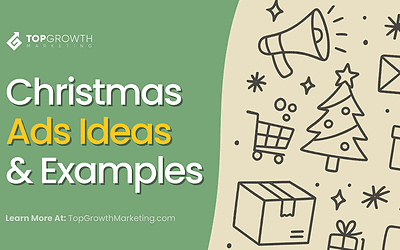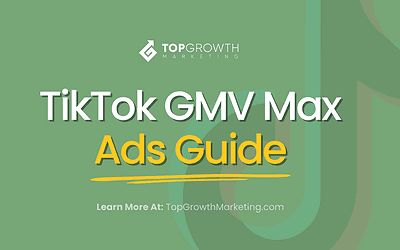Your ROAS isn’t looking good? Ads aren’t performing per your expectations?
Don’t panic just yet. There’s more to the metrics of your ads than meets the eye.
When someone clicks on your ad for the first time it doesn’t mean that they’ll instantly convert. Usually, it’s just the start of a journey that can last for days, weeks, sometimes even a month.
When this journey finishes and the customer completes a purchase your ad still needs to take credit for that conversion. However, how can you know that it was your ad driving the purchase?
It’s all possible thanks to the attribution windows!
Read this article to understand the importance of conversions, attribution, and the impact the new iOS14 update will have on these parameters.
The Importance of Conversion Tracking
Conversions are the end goal of your marketing campaign and can vary depending on your business strategy.
Some campaigns can serve to bring subscribers or followers, book a call, or make a purchase in your online store. All these actions fall under the “conversion” category and help you measure the performance of your ads.
Conversion tracking allows you to optimize your campaigns around the best-performing ads. By keeping track of your conversions, you can better understand your customer’s behavior and what kind of message attracts them.
You’ll know where your audience comes from, their demographic, age, and interest. The bigger the sample size, the more data you’ll have going forward.
Thus, conversion tracking is crucial not only for the performance of your campaigns but your overall marketing performance.
Need Help Setting Up Conversion Tracking?
Schedule a call right now and let’s discuss paid ads.
Difference Between Pixel and UTM Conversion Tracking
Conversion tracking is possible thanks to UTM tags (codes) and Pixel.
· UTM (Urchin Tracking Module) codes are added to the end of the URL and allow you to track various parameters that lead to conversion.
Since it’s just a URL extension you don’t need to add any code to the website. However, it can be tough to track some actions relying only on these tags.
· Pixel is a snippet of code on a website that can track customer behavior after they click on a particular Facebook ad.
This provides you insight into customers’ actions on your website such as purchase, adding to cart, opt-in form competition, and many more.
Thanks to the Pixel you can track your ROAS (return on ad spend) with precision. A huge part of this tracking is the “attribution window” which allows you to credit your ads for actions that happen over a period of time.
What is the Facebook Attribution Window?
The Facebook attribution window (or conversion window) is the period between clicking onto an ad and taking an action on the website.
Say a Facebook ad catches your eye and you click on it. Then you land on a page and buy a product.
When that happens, Facebook will credit that ad for the purchase, and the results will appear in your ads manager.
However, what if you land on a website via an ad, but you don’t purchase immediately? How will a marketer know it was that ad that converted? That’s where attribution comes in.
For a long time, Facebook used a 28-day click, 1-day view attribution window.
This meant that the conversion credit previously went to the last ad you clicked before purchase within 28 days; or the last ad you viewed before purchase within 1 day.
So, if you clicked on an ad and go to a website only to leave, you’d trigger the start of this window. Then, 28-days later you could see another ad that convinces you to complete a purchase. The last ad you clicked or the last ad you saw on your newsfeed wwould get total credit for the conversion.
This played a crucial role in things like delayed conversions and reporting on ad performance.
However, with changes to the newest Apple iOS update, the 28-day attribution window, and other tracking data/features have slowly been phased out.
But more on that later.
Different Facebook Attribution Models
The aforementioned Facebook attribution model is the default, but it’s not the only one. Facebook provides a wide range of attribution models so you can have better insight into your customer’s behavior.
· Even Credit: Each touchpoint of the journey gets even credit. If you want to have a full scope on how your audience interacts with your ad, you’ll use this method.
· Last Click: The last ad your customer clicked will get credit for the conversion (not the last impression)
· First Click: Similar to the last click, Facebook will attribute the conversion to the first ad that your customer clicked.
· Positional: The positional model has two options (30% and 40%) that work on the same principle. Facebook will attribute the highest percentage of credit to the first and last touchpoints and the remainder to the other touchpoints of the journey.
· Time Decay: This model gives the most credit to the touchpoint that led to conversion and the least amount of credit to the first touchpoint in the journey. So, the more time/touchpoints it takes for an ad to convert the lesser the attribution on the first touchpoint.
You can find a detailed explanation of all the above models here and here.
Which Facebook Attribution Model Fits Your Business?
To make the most out of your ads you need to figure out which Facebook attribution window will work best with your business. And for that, you’ll need to understand the different stages of the sales funnel.
At the bottom of the funnel are people who are already aware of and interested in your product. This is “warm to hot traffic” that’s close to converting. You want to target this traffic with remarketing campaigns and focus on the performance of the ad that led to the conversion.
That’s why for optimization (bottom of the funnel) you’d want to use the last-click attribution. You’re not interested in the entire customer journey – just at that final touchpoint.
On the flip side, if you’re looking to grow your business, you’ll want to target the top of the funnel (prospecting). You’ll want to track the performance of an ad that’s the first touchpoint before the conversion. That’s because you want to credit the start of the customer’s journey first and foremost.
However, if you’re looking for a more holistic approach (tracking both growth and the bottom of the funnel), you may want to turn to positional or even credit as well.
Take some time to think about your campaign before you make the final decision.
Understanding the iOS14 Changes to Facebook Attribution Window
The infamous iOS14 privacy update started tectonic shakes in the paid advertising space.
For most, this announcement is nothing but a “war between Facebook and Apple”. However, it can greatly affect the way marketers track the performance of Facebook ads (read more here).
The crucial change Facebook made was moving from an old 28-day click window to a 7-day click attribution window.
As said, the 28-day window allows you to have a much better overview of your ad performance.
That’s because the buyer’s journey can start on day one when they first see your ad, but it ends a couple of weeks later when they see another ad that makes them convert. This is a delayed conversion and it can contribute to 10%+ of sales over these 28 days.
With Facebook moving to a 7-day attribution window you will have a harder time tracking purchases that go beyond this lengthy journey. Put simply, if it lasts for more than 7 days you won’t see it in the report.
Some of your ads will underperform in theory, when in reality they are still driving sales. You will just have a hard time reporting it.
So, your ROAS will drop in the ads manager because there won’t be as many delayed conversions, but your Shopify or BigCommerce analytics will still show the sales are happening.
You can imagine every marketer’s headache. 😞
How to Prepare For the iOS 14 Update?
First up, there’s no need to panic.
When the update rolls out you may see a drop in your reporting performance. Your ROAS may drop along with some other of your key performance indicators. But if the store is still converting sales, your ads are doing their job.
Before you start turning to different methods of performance tracking, make sure you do everything from this checklist:
· Stay up-to-date on any new information Facebook releases.
· Increase custom audience sizes.
· Update automated rules.
· Verify Conversions API implementation.
· Start using the Facebook & Google attribution tools (they are free!).
· Diversify your traffic (run ads on more channels – Pinterest, TikTok, Snapchat, Taboola…)
· Look at the whole picture not just your ad account results (total week/month revenue/expense and ROI). This article can help.
· Set new benchmarks for 7-day attribution performance.
You should also start implementing workarounds so you can reduce these reporting changes and verify domains to make sure the pixel is firing correctly.
If this sounds overwhelming or confusing feel free to contact us – we’re happy to help!
How to Improve Facebook Conversion Tracking?
It will take a bit of tinkering in the short run if you want to stay on track with your ad performance. Below are some options that we recommend to our clients.
Enable All Advanced Matching Features On Your Pixel
Facebook has a few hidden toggles that can greatly improve customer matching using the data that is sent back to Facebook, we’ve outlined the steps below:
- Navigate to the Events Manager in Facebook Business Manager
- Select your Pixel.
- Click “Settings”
- Scroll down to the “Advanced Matching” section.
- Click “Show Options” under “Automatic Advanced Matching.”
- Enable all of the toggles, seen below:
Use Server Tracking
Facebook started emphasizing server tracking in a response to iOS14’s recent update.
Namely, they have created a way to move the bulk of tracking from users to the server they are purchasing on (Shopify, WooCommerce, etc.)
Afterward, this data passes information back to Facebook.
In this case, server tracking is synonymous with Conversions API (CAPI). You can find more about it and how to set it up in our guide here.
Start Using Third-Party Tools
Remember, there’s always helpful software that can help you track your ad performance. Thanks to their greater tracking potential they can already provide better and more in-depth insight than platform built-in tools.
This can help you get detailed and accurate results despite the iOS update and shorter attribution windows.
However, they are mostly paid tools that can prove to be a bigger bite than many can chew when it comes to investment.
On the flip side, the better you can measure the performance of your ads the better you can optimize your marketing strategy. As a result, you invest in a consistent and increased performance in the long-term.
If you opt for such a solution, here are some tools that you could try:
- Wicked Reports (597/month basic plan) – A personal favorite. Perfect fit for SMEs and agencies that partner with them.
- RedTrack ($50/month basic plan) – Great option for smaller agencies or small business owners to get accurate data.
- Rockerbox ($200/month basic) – Decent tool for B2C enterprises with top-notch customer support.
- SegMetrics ($27/month basic plan) – Helpful for understanding the full scope of each customer’s journey.
- ClickMeter – ($29/month basic plan) – Tool that simplifies conversion tracking, provides excel exporting, and cloud storage.
- Trackify ($29.95/month basic plan) – A FB pixel app with advanced tracking options and top-notch customer support.
- LeadsRX(request quote) – Tool for medium to large businesses with powerful data tracking.
And these are just some of the many apps that can help your smooth transition to the post-iOS14 world. If you know of any better apps feel free to list them in the comments.
Conclusion
Facebook attribution window remains a vital part of your paid advertising campaign even after the new updates.
Marketers will need to find a way to adapt to these changes either by tinkering with the attribution tool or relying on third-party apps.
It’s yet to be seen how the update will impact the campaigns in the long run, but you best come at it prepared.
What do you think? How will the new default Facebook attribution window change performance tracking? How will you react?
Feel free to reach out if you have any questions regarding preparation for Facebook’s “new normal”, and make sure you visit our blog for more news & tips from the world of paid advertising.






hey I am a digital marketer and I am still learning and I really love social media marketing this blog gives me my all answer thank you, author.
Np, glad you liked it. Good luck with your learning 🙂